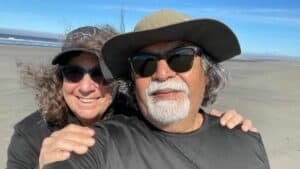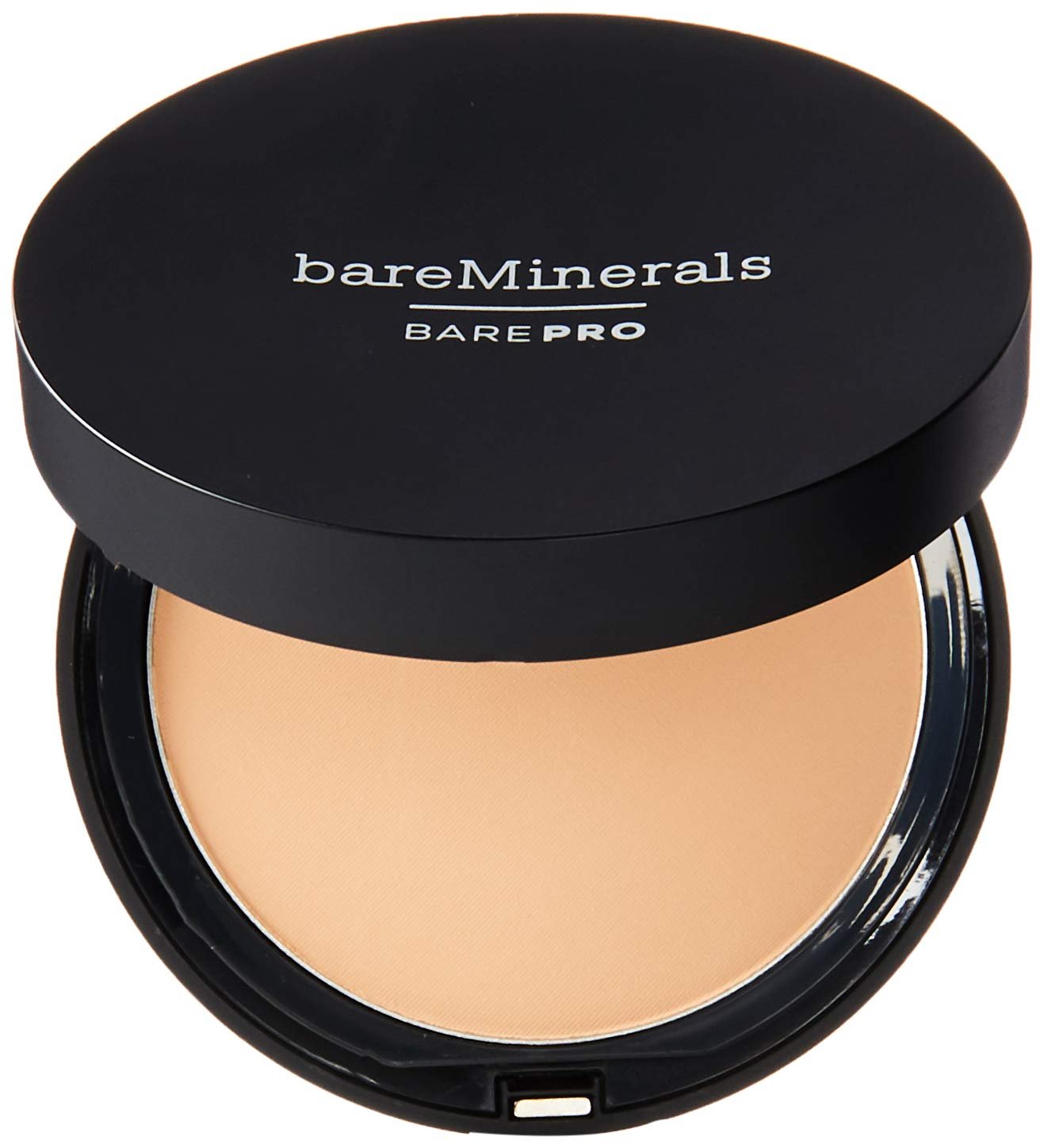
In Carpe Diem: Have You Ever Thought of Getting a Cargo Van?, I promised Part Two would describe what happened on the first adventure for my husband Rito, our dog Pepe, and me in our new Dodge Promaster.
I’m happy to report that the trip was terrific. Several people told me that my blog inspired them to consider trying a cargo van. Here I’ll share a bit about our van and our trip. I will also offer tips for camping during another Covid surge and, finally, advice from nomadic travelers.
The Van: A Work in Progress
Our van still needs a lot more converting, but we had everything we needed. The memory foam bed was comfortable. Since we didn’t have time to install a solar panel, we recharged the electrical system with our car battery. As a result, we had light, and I could use my CPAP.
A small fan kept us cool on the one hot night, and on a smoky day, we plugged in a portable air filter. A single burner electric induction stove cooked our food. An ice chest served our needs. Later we’ll install a small refrigerator.

This type of cargo van has many benefits. First, the short length allowed us to pull into parking spots with ease. Second, blending in with Amazon vans, we traveled incognito. Finally, unlike bulky campers, we had no trouble maneuvering along the windy coastal roads.
The Trip: Two Weeks Driving North, a few Days Heading Back South
I highly recommend the coasts of Oregon and Washington for a beautiful, relaxing vacation. Six hours after heading north from the SF Bay Area, we crossed the Oregon border, and for the first week, we only drove a few hours a day to camp in various lovely locations.
Strolling down Harris Beach, we witnessed tide pools with brilliant green sea anemones and colossal starfish.
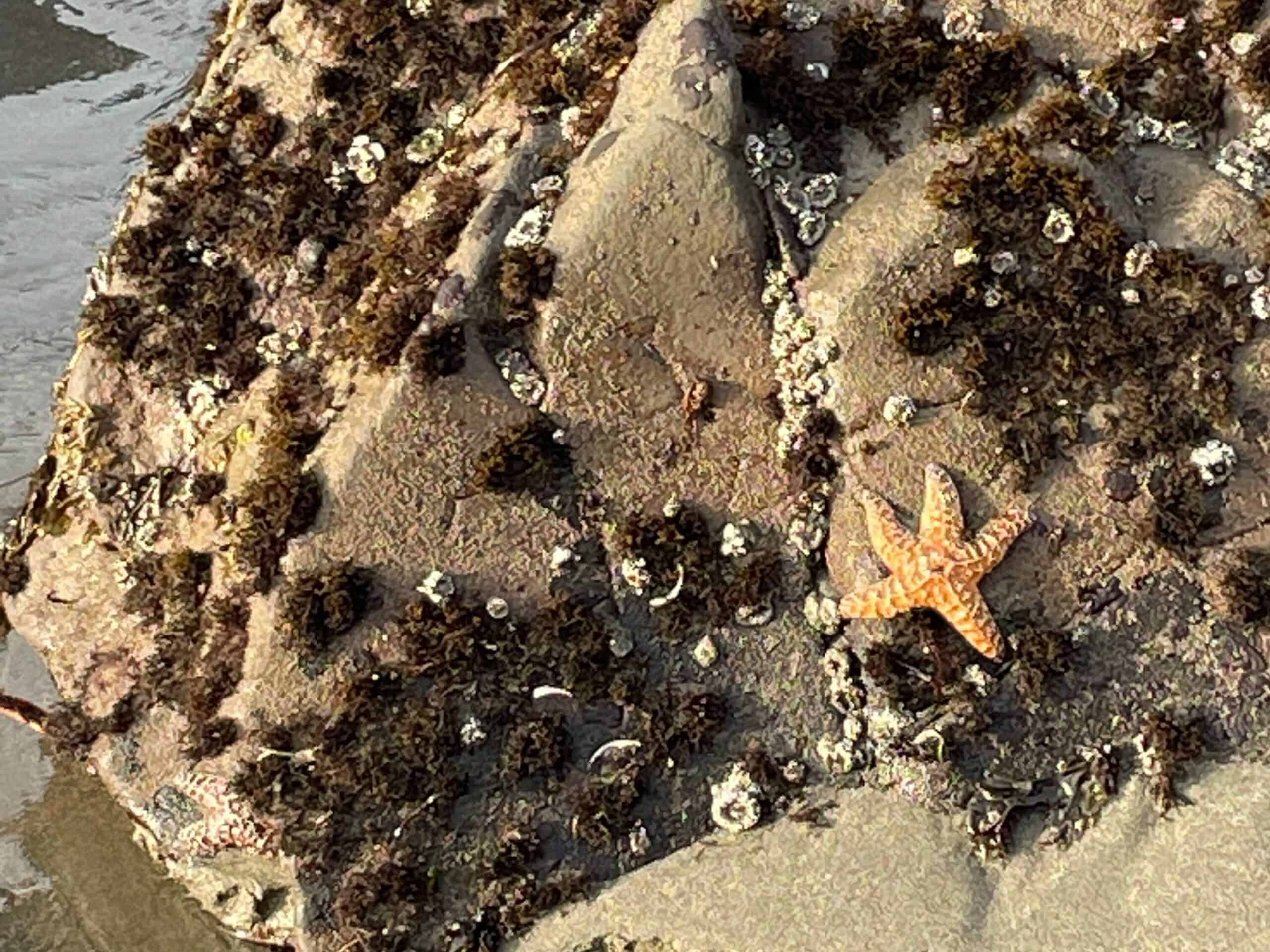
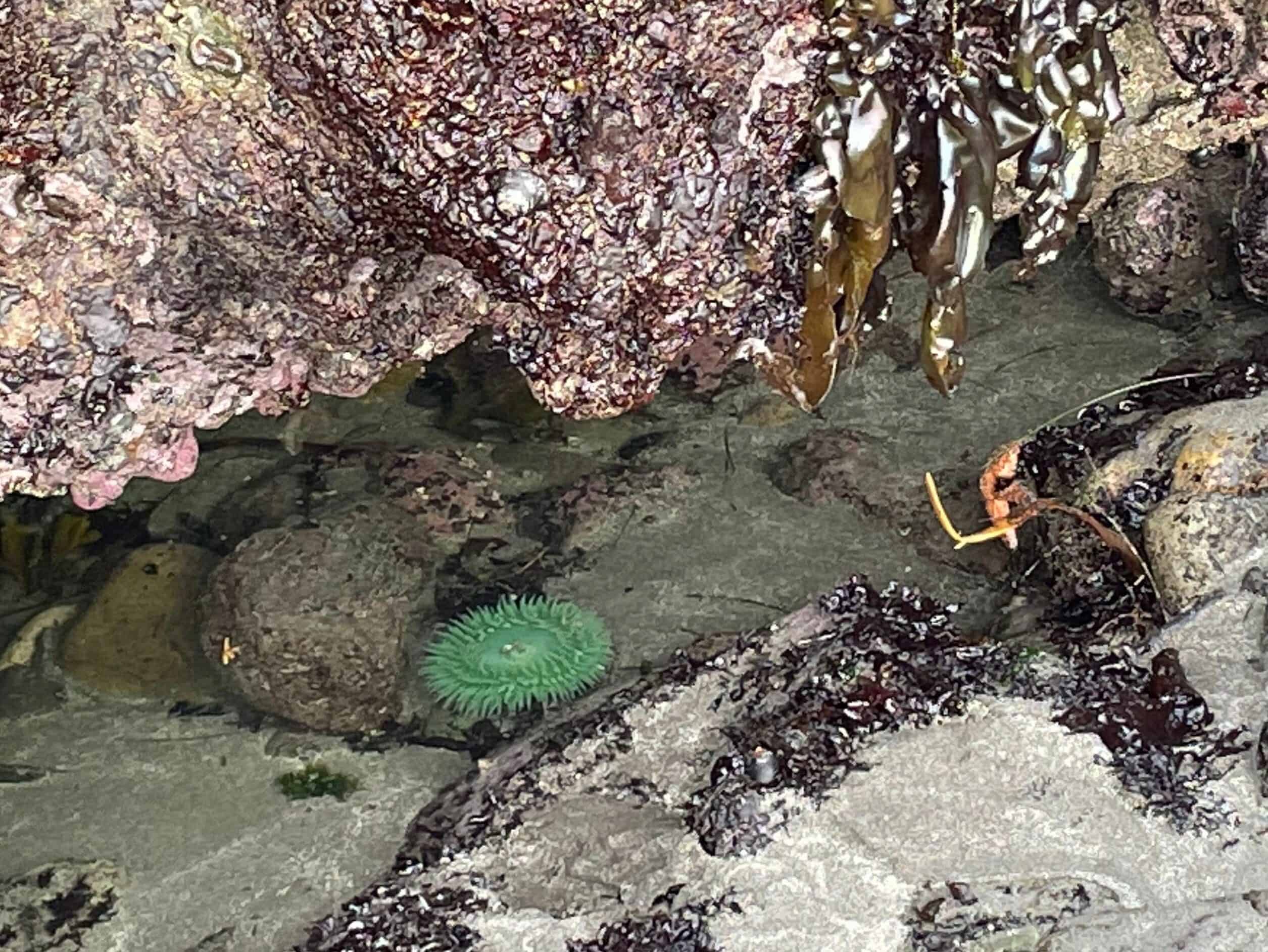
In Florence, we climbed massive white dunes in a strange sandy world that stretches for miles.
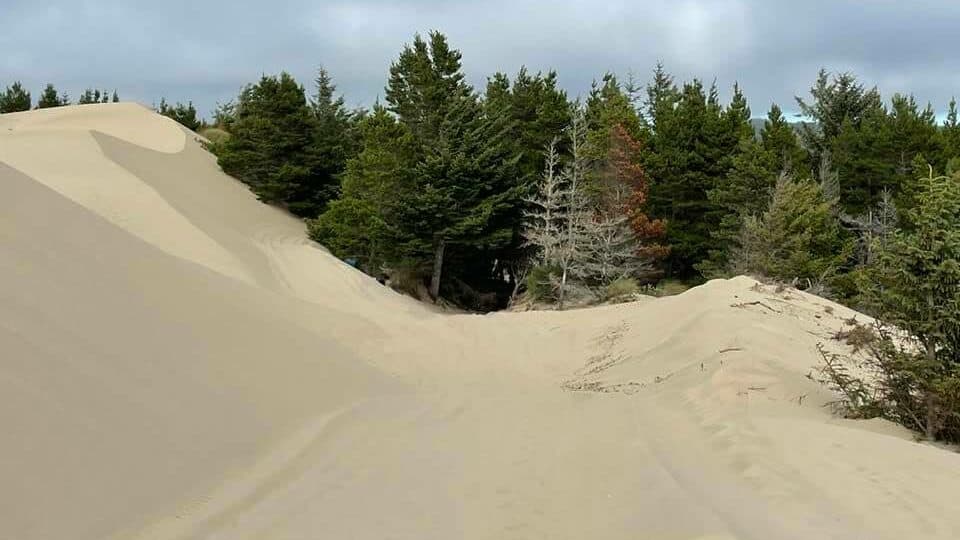
On the Washington border, the 1,200-mile-long Columbia River empties into the ocean. There, we camped at Fort Stevens State Park, which features the only Civil War-era fort on the west coast. We climbed into bunkers that served as a World War II command center and even was shelled by a Japanese submarine.
In Washington, we spent several days on Lake Quinault, a lesser-known part of the Olympic rainforest. At the tip of the lower 48 states, we stayed outside Port Angeles and drove up to Hurricane Ridge with views of Mount Olympus and other snow-covered peaks. Unfortunately, that day, smoke from fires in Eastern Washington obscured our view.
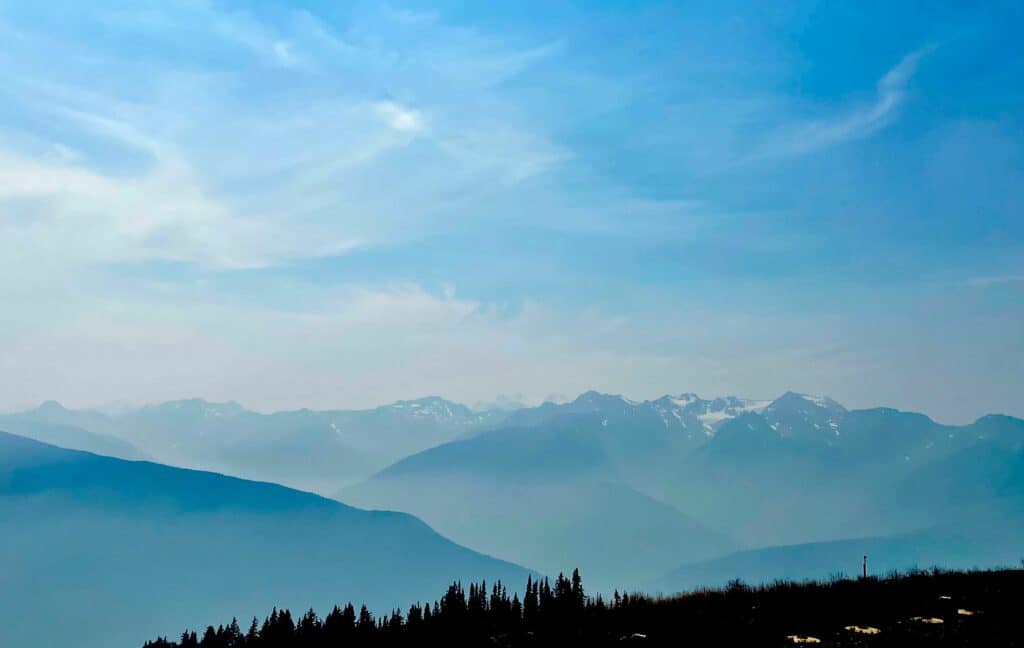
In the Olympic National Park we took a short hike to the spectacular Madison Falls.
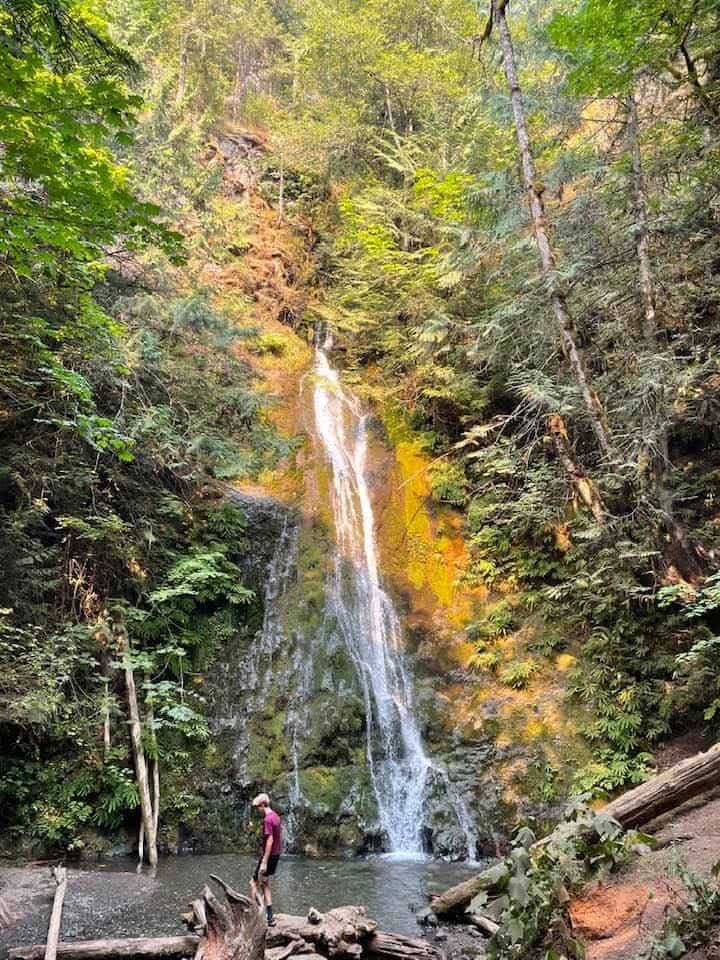
From there, we headed back, stopping at Rainbow Falls State Park and then heading south on Highway Five.

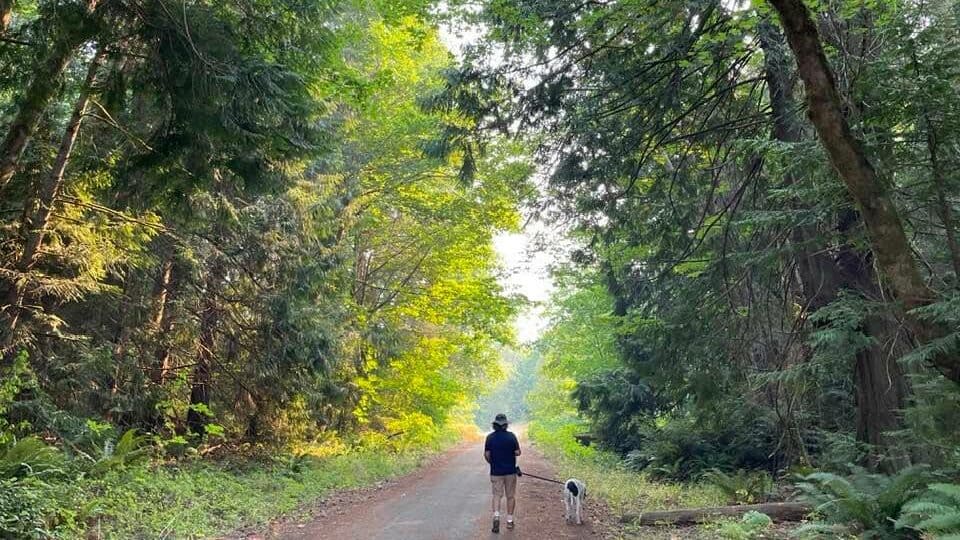
Wildlife
All along the way, we saw spectacular wildlife, eagles, cottontail rabbits, and a majestic pair of elk that stared straight at us. There were egrets, terns, osprey, red-footed Black Guillemots, and hundreds of squawking gulls along the ocean and in the lagoons.
Along lakes and rivers in the Olympic Rainforest, we viewed a family of merganser diving ducks, flocks of Canadian geese, a noisy killdeer, and a great blue heron. Woodpeckers, chickadees, and a fluffy winter wren greeted us in the forest.
Tech Support
On our way south, we stopped in Portland at the Light Harvest Solar Company, where we had purchased our electrical system. The technician marveled at Rito’s work and fixed a few things that were impeding the system.
There Was Even Time for Work!
Finally, after 12 days, we arrived in Ashland, where I gave two days of workshops. I’d safely stored my professional clothes and materials in a special suitcase. All went well, although I plan to give presentations at the beginning of the trip next time.
We made one alteration to our route. We had planned to spend our last night at Mount Shasta, but due to the wildfires in that region, we doubled back north and crossed back to the coast, spending our last night in the redwoods. I was able to reserve a campsite on my phone.
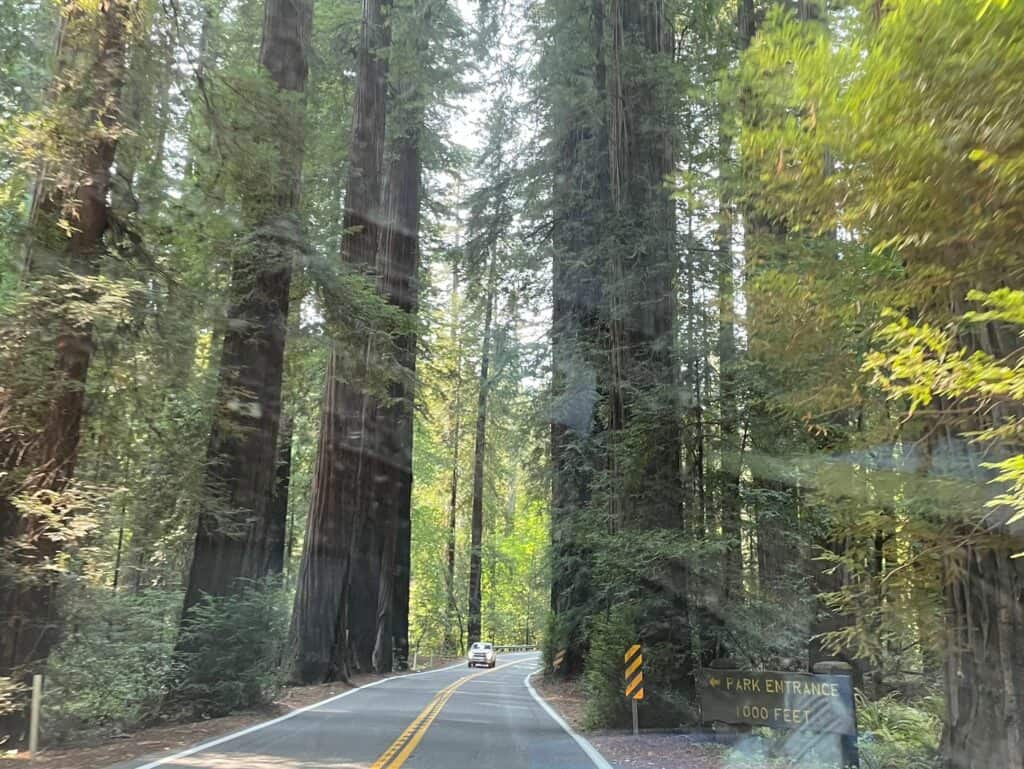
Planning Is Required
A successful trip to the popular Oregon Coast and the Olympic Rainforest requires planning ahead. We learned this the hard way on past trips. Once after traveling through Alaska and picking campsites as we went, we were forced to spend the night in an Oregon casino parking lot because all campgrounds were full.
With the ease of the Internet, I carefully mapped out a trip using Google Maps. I checked photos of the campgrounds, read reviews, and reserved spots for every night. All campgrounds sent preregistration forms, allowing us to arrive at our leisure and find our designated site.
Each location along the coast has its unique charm and only requires driving 2-3 hours from place to place. Here’s my route with all campgrounds. I recommend every one of them.
Camping During Covid
Due to Covid, we avoided crowds. Even with many people traveling to the coast to escape smoke and fires, we could keep a safe social distance. We wore masks in stores and restrooms and bought take-out or cooked our meals. Coastal trails and beaches had room for everyone. Since I presented to a large group, we had Covid tests on our way home, receiving negative results two days later.
Tips from True Nomads
Along the way, we met several nomadic campers. One 66-year-old woman had been on the road with her German Shepherd for three months. After her divorce, she decided not to pay substantial monthly rent and bought a Dodge Promaster like ours.
While recovering from a hip replacement, she hired a company to convert the van to match her needs. She explained that her solar panel gave her all the energy she needed, so she never hooked up to electricity.
She described herself as a newbie but appeared very savvy about the resources such as free campgrounds found on Freecampsites.com. She also told us about the women’s meetup she attended, making new friends, and getting tips.
If you’re considering van life, check out Van Camping And Senior Citizens – Are They A Match? The article tells of many boomers’ experiences with van camping. Also, here’s an excellent guide: Van Life How To: Your Complete Guide to Living in a Van. Finally, you might take a test run, like we first did, by renting a van on Outdoorsy (US) or AutoEurope (internationally).
Then we’d love to hear about your experiences.
What do you think is the biggest upside to traveling in a van? Do you think you could have a trip in a van or camper? Where would you go and what would you do?

